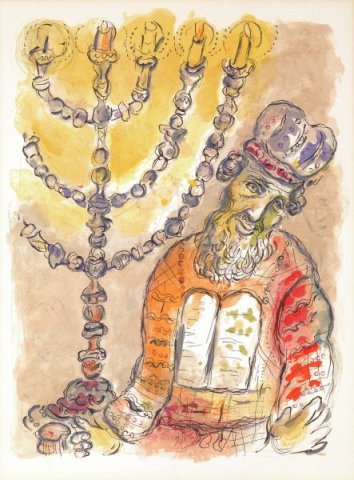The Torah can best be understood as a Divine stream of consciousness. It flows from one idea to another, often within the context of one or more larger ideas that form the overarching themes organizing its sections and books. And like with any other stream of consciousness, some connections will be harder to understand than others.
Among the most difficult in this regard are Chapters 5 and 6 in Bemidbar. Starting from 5:5, we find three groups of laws that seem out of place. The first is about theft, but the rabbis identify it specifically as theft from a convert. The next are laws of the sotah, the woman accused by her husband of unfaithfulness. Finally, we encounter the laws of a nazir, someone who chooses to abstain from wine, among other things. The rabbis famously suggest that the connection between the last two sections is that one who sees the effects of wine in a sotah will want to refrain from wine as a result. While that may provide some internal organizing principle, it does not explain why the laws of sotah or theft from the convert are doing here, to begin with.
Hence many commentators have tried to explain the placement of these sections. Yet in spite of some very creative suggestions it still remains a mystery. Perhaps the answer is to be found in truly understanding their context: The book of Bemidbar is all about organization. Among other things, this means where each Jew would belong. The first few chapters organize the place of the twelve tribes. This is followed by a description of how to divide the Levites. Indeed, Chapter 5 then opens with those who must temporarily leave their homes and reside outside of the camp. But that is temporary.
Not everyone is covered by the long list of placement which opens our book. What about the convert? He belongs to neither family nor tribe. Fascinating is that the Torah never discusses where they were to encamp. (This lacuna is emphasized by the rabbisâ suggestion in Vayikra Rabbah 32:3 that the blasphemer, whose father was a convert, got angry as a result of not finding where to encamp.)
But the convert was not the only outsider. While everyone else had a clear place in the camp, finding oneâs place is not only about its more obvious external side. There is also an inner dimension as well. And, as we will now explain, the sotah and the nazir are two people that likely felt this inner displacement more than anyone else.
The marital relationship is referred to as home, such that the rabbis frequently refer to a manâs wife as his home. A great insight is revealed by this. More than a place, it is our intimate circles that give us a feeling of belonging and identity. Whether the fault is with the husband, the wife or both, a sotahâs sense of belonging with her husband is undermined. Just as she is no longer his home, neither is he herâs.
If the focus of the sotahâs alienation is the bedroom, the nazirâs is the dining room. One of the main reasons for the rabbinic additions to kashrut is to prevent too strong a connection between Jews and gentiles. When you sit to eat with people, but you cannot share your food with them, a certain alienation inevitably seeps in. In this way, the nazir is alienated from those around him. As they partake in the camaraderie most powerfully engendered by the drinking of wine, he sits alone in his own space. Of course, this is in addition to the pre-existing alienation that a nazir must already feel to begin such a process.
So far, we have found what connects these three sections. What we must still explain is what they are doing in the midst of a discussion about the Levites and the priests. Firstly, one needs to notice that the priests are at least tangentially involved in all three discussions (and on a simpler level, this may be enough for the inclusion of these three groups of laws here). Also worth our notice is that the section that follows these discussions is the instructions for the priestly blessing, the Birkat Kohanim. While fitting more broadly with the early discussions in Bemidbar, there are many other places where we might have envisioned it.
Hence one senses that the Torah is making the Kohen the home of the homeless. The Kohen is the one who will accompany these three alienated individuals and, by so doing, become their connection to the rest of society. In line with this, while the blessing that follows these sections may well be meant for all of the Jews, its placement suggests that the priests keep those without a place first and foremost in their thoughts.


